Make the Most of Your Trip by Exploring the Best Things to Do in Afghanistan
Afghanistan offers incredible places to visit and plenty of things to do. From historic sites to natural beauty, experience the best activities that make every trip unforgettable.

Get eVisa
via Horved

Travel Insurance
Via nomads
Get Free Consultations
Visit such sites as the National Museum, Babur’s Garden, Chicken Street Market, and traditional Afghan tea houses.
Bamiyan Buddha carvings, Jam minaret, Friday mosque in Herat, and Bala khal in Balkh stand out as the most legendary.
While visiting south Asia some of the most relishing Afghan meals are Kabuli Pulao, mantu, bolani, and succulent bread Afghan naan, served with yogurt and chutneys.
Indeed, one can relax at scenic areas in the mountains perfect for contemplation, natural hot springs located in rural regions, and traditional baths known as Hamams.
Afghanistan is best visited in Spring from March to May and in Autumn, September to November, when the weather is perfect for travel.
Activities such as trekking the Hindu Kush mountains, hiking to remote valleys, and navigating rugged trails are available for veterans of the great outdoors.
In Afghanistan, Nowruz (Persian New Year), Eid al-Fitr, and tribal celebrations are observed with music, dance, feasts, and fun social gatherings.
Afghan pop culture integrates folk music with contemporary styles, local television series, new films, and social media movements among the school-aged youth.
Purchase Afghan embroidery, pottery, shawls of pashmina, and jewelry of lapis lazuli. Also, look for carpets hand woven by Afghan artisans.




Find Hotles
via booking,com

Find Hostels
via Hostelworld

Find Rental Car
via sunny travel

Find Flights
via skyscaner

Book A Bus
via 12Go

Get Visa
via ivisa

Get Travel Insurance
via heymenda

How To Pack
our tips
Modern Cities & Culture in Afghanistan
Afghanistan’s cities, long at the crossroads of history and culture, are seeing a quiet resurgence in 2025. For travelers searching for places to visit in Afghanistan, Kabul stands out with its ancient bazaars that buzz beside art galleries and mountain-backed cafés. Among the most memorable tourist attractions in Afghanistan, Herat and Mazar-i-Sharif offer a different pace—layered with centuries of Islamic architecture and artisan traditions. While urban travel here comes with caution, those who explore with care will uncover soulful cityscapes, rich hospitality, and a culture stitched with poetry, resilience, and a proud artistic legacy—making them some of the best places in Afghanistan for cultural exploration.
City & Culture Highlights
Kabul's Cultural Core
Stroll Chicken Street for handmade crafts, vintage carpets, and old curios.
Step inside the National Museum for glimpses of Buddhist statues and pre-Islamic gold.
Sip tea and take pictures from Bibi Mahro Hill’s sweeping lookout.
Catch fresh shows at the Afghan Contemporary Art Institute nearby.
Herat's Historical Grace
Take in the glistening cobalt tiles of the Friday Mosque (Masjid-i Jami).
Scale the Herat Citadel, which was built decades ago by Alexander the Great.
Wander colorful bazaars scented with saffron, silk, and bronze work.
Join local poets for verse and talk in welcoming teahouses.
Mazar-i-Sharif's Spiritual Heart
Stand before the Blue Mosque (Shrine of Ali), a breathtaking shrine and stopping point for pilgrims.
Wander through calm city parks and bustling squares alive with families and music.
Watch as Sufi musicians gather on street corners or in courtyards, sharing rhythm and prayer with anyone who sits and listens.
Cultural Moments
Enter the circle and take part in an Attan dance that revolves around open festivals and is accessible to all skill levels.Pause to see master calligraphers crafting verses in ink, their brushes gliding across paper in Kabul’s artisan lanes.
Sip chai at a garden café while poets recite new works at informal literary soirées under strung fairy lights.
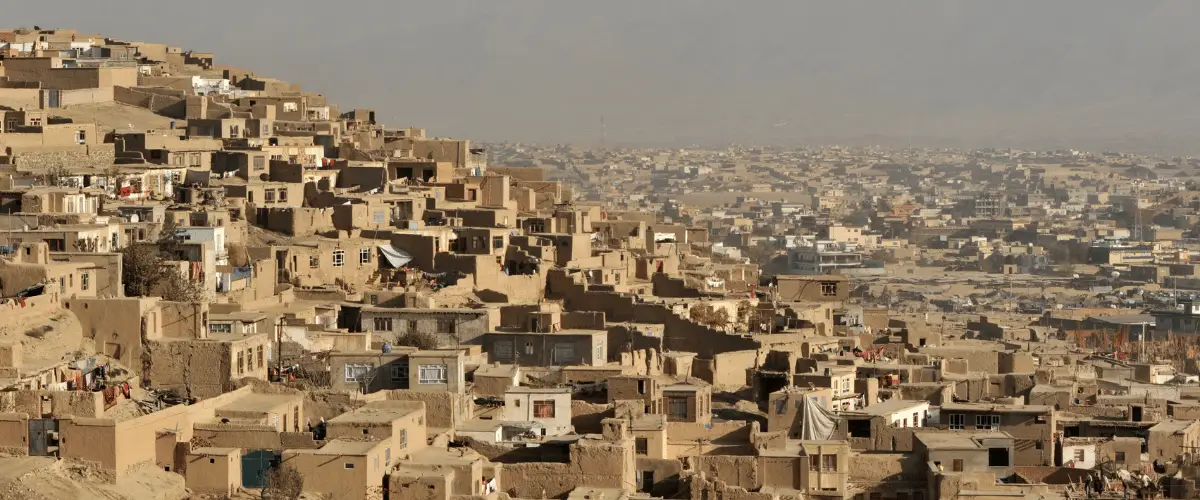
FAQ – Visiting Afghan Cities
Do I need special permits to visit historic sites in Afghanistan?
Some areas require special permission, especially if in sensitive regions. Always check locally.
Are historic and heritage sites in Afghanistan safe for tourists?
Conditions vary. Many heritage sites are in remote areas—travel with a trusted local guide and check current advisories.
What is the best season to visit Afghanistan’s heritage and historic sites?
Spring and autumn offer the most pleasant weather for exploring outdoor monuments.
Pro Tip
Did You Know?
History & Heritage in Afghanistan
Top Heritage Sites
Bamiyan Valley
Grin as you stand in the spot where enormous Buddha sculptures previously towered over the valley, testing the skyline for centuries. Explore caverns that include frescoes from the 500s that are still slightly luminous beneath deteriorated plaster. Visit the Bamiyan Cultural Center to hear tales that connect pilgrims from the past to the present.
Minaret of Jam
Hidden in the western hills, this UNESCO gem rises 65 meters of patterned brick, built in the 1100s by Ghorid hands. Look closely to find curling Kufic letters and floral motifs that have resisted time and wind. Reaching the minaret requires effort, but the reward is silence, sky, and stunning detail.
Herat Citadel (Qala Ikhtyaruddin)
Originally ordered by Alexander himself, the fort has dressed in many repairs yet kept its strategic gaze. Now visitors climb the thick walls for sweeping city views and duck into rooms full of Afghan history. The citadel tells of Herats golden age as an artistic and scholarly hub on the Silk Road.
Blue Mosque, Mazar-i-Sharif
Often called the Shrine of Ali, the Blue Mosque sits at the heart of Shia faith here.
Its shimmering turquoise tiles and the gentle swirl of white doves never fail to amaze.
Every Nowruz, pilgrims gather in droves to mark the Persian New Year beside its brilliant domes.
Cultural Heritage Experiences
Wander the crumbling caravanserai left behind by Silk Road merchants on a guided walk.
Pause at Sufi shrines and hear how Islamic mysticism still colors Afghan life.
Watch young hands bring calligraphy and miniature painting back to life in open studios.

FAQ – Top Historical sites in Aghanistan
Do I need special permits to visit historic sites in Afghanistan?
Some areas require special permission, especially if in sensitive regions. Always check locally.
Are historic and heritage sites in Afghanistan safe for tourists?
Conditions vary. Many heritage sites are in remote areas—travel with a trusted local guide and check current advisories.
What is the best season to visit Afghanistan’s heritage and historic sites?
Spring and autumn offer the most pleasant weather for exploring outdoor monuments.
Pro Tip
Did You Know?
Food & Drink in Afghanistan
Must-Try Afghan Dishes
Kabuli Pulao
Afghanistan’s beloved rice dish, perked up with tender lamb, raisins, and sweet carrots.
Often the centrepiece at weddings, feast days, and any guest dinner.
Cooked with the special touch of each valley, so no two versions are alike.
Mantu
Handmade dumplings stuffed with spiced meat and chopped onions.
Drizzled with yogurt, garlic sauce, and a sprinkle of lentils on top.
A favourite starter whenever friends or family gather round.
Kebabs
Chunks of lamb or beef threaded on skewers and grilled over glowing coals.
Always served with soft naan, fresh chutney, and slices of onion.
Street stalls and up-market grills proudly show off their local style.
Bolani
bread that is thin and filled with lentils, potatoes, or herbs.
Pan-fried until golden, then dipped in tangy chutney.
Cheap, filling, and everywhere, from roadside carts to tea tables.
Sheer Yakh
Rich, rose-water and cardamom ice cream, a creamy nod to summer.
Found at dessert stalls or during summer festivities.
Local Drinks & Treats
Doogh is a sour yogurt drink enhanced with a pinch of salt and mint.
Cardamom-infused Afghan green tea is served with lots of discussion.
Halwa and firni Milk, flour, and sugar come together in these festive sweets.
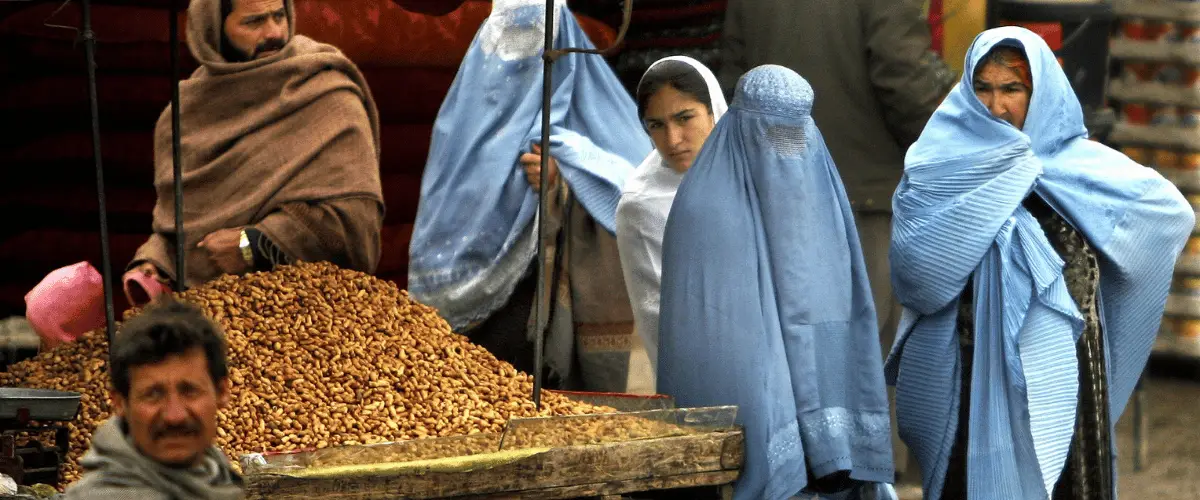
FAQ – About what to eat in Afghanistan
Is Afghan food spicy or mild in taste?
It’s flavorful but not overly spicy—Afghan cuisine focuses more on aroma than heat.
Can vegetarians find food options in Afghanistan?
Yes, though meat is common, dishes like bolani, lentil soups, and spinach stews are widely available.
What is the dining etiquette in Afghanistan?
Meals are often eaten on the floor, with hands or flatbread instead of utensils. Always wash hands before and after meals.
Pro Tip
Did You Know?
Wellness & Relaxation in Afghanistan
Relaxation Spots & Traditions
Traditional Hammams (Bathhouses)
tucked away in Herat and Kabul’s oldest neighborhoods.
They offer a friendly, steam-laden bath shared with locals.
Guests enjoy black soap, fragrant scrubs, and olive oil rubs.
Natural Hot Springs
Istalif and Band-e-Amirs pools are said to grant healing warmth.
Villagers have soaked there for aches, calm, and renewed faith.
A trusted guide is wise, as paths to the springs can be remote.
Countryside Retreats
Stone guesthouses high in oak-scented valleys promise quiet time, clean air, and a slower beat.
Journals, prayer beads, or simply silence thrive in these settings.
Meals, cooked from garden herbs, taste fresh, and nights fall under a blanket of stars.
Wellness Practices
Saffron, cumin, and black seed star in herbal tonics made by village healers.
Traditional family massage techniques still thrive in many Afghan homes, especially in rural areas where knowledge is passed from grandmothers to grandchildren.
During holy seasons like Ramadan and Nowruz, spiritual retreats provide a time for emotional renewal, prayer, and quiet reflection.
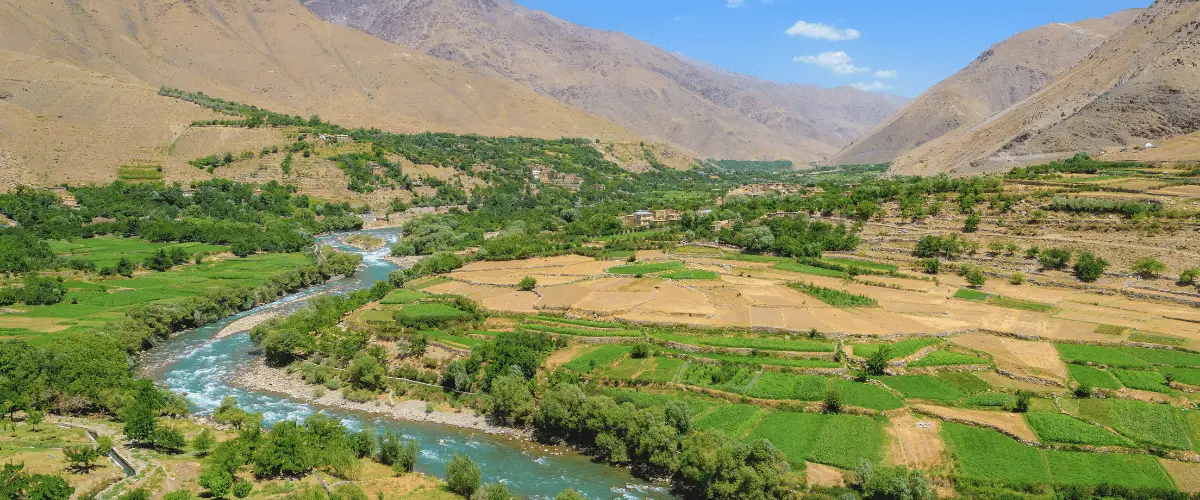
FAQ – Relexation places in Afghanistan
Not in the Western sense. Most wellness is community-based or nature-driven—simple but deeply restorative.
Always check local security updates and travel with a trusted guide or tour provider.
Pro Tip
Did You Know?
Nature & Seasons in Afghanistan
When to Visit by Season
Spring (March to May)
An invitation to trekkers and culture-lovers alike.
Lime and crimson blossoms splash the central highlands.
Nowruz, the Persian New Year, fills streets with music.
Summer (June to August)
Jalalabad and Kandahar can feel furnace-hot.
On high trails, Panjshir or Bamiyan stay pleasantly cool.
Perfect for hidden lakes and wilderness paths.
Autumn (September to November)
Crackling air, fading foliage, and lighted tea tents.
Harvest fairs celebrate wheat, grapes, and saffron.
Stable skies lure photographers and hikers.
Winter (December to February)
Snow quilts the northern and central zones.
Bamiyans slopes hum with ski-boards for brave novices.
Roads can drift shut, so gear for open-eyed caution.
Climate Zones & Travel Tips
Highlands (e.g., Bamiyan, Badakhshan) – Expect cold winters and cool summers; spring and fall offer the most pleasant hiking weather.
Lowlands (e.g., Herat, Jalalabad) – Enjoy hot summers and mild winters, so plan your visit for spring or autumn when conditions are kinder.
Deserts (e.g., Registan region) – Mid-year heat can be brutal, though evenings cool down; hiking and touring are best avoided during peak summer months.
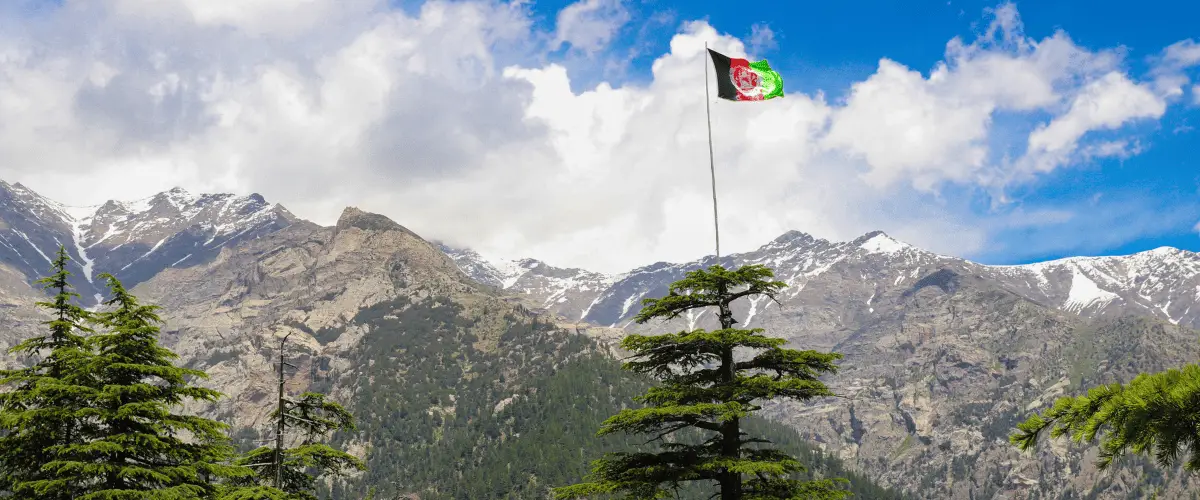
FAQ – Natural season in Afganistan
How cold does Afghanistan get in winter?
Yes in the mountains—but some southern areas remain accessible. Plan indoor cultural activities in colder months.
Can tourists go trekking in Afghanistan during summer?
Only in the highlands. Stick to elevations above 2,000m for cooler temperatures and scenic routes.
What is the best time of year to visit Afghanistan?
April to May and September to October offer the best balance of weather and accessibility.
Pro Tip
Did You Know?
Adventure & Outdoors in Afghanistan
Top Outdoor Experiences
Hiking in Bamiyan
Wander through Bamiyans stunning valley, past giant Buddhas and fertile fields.
Explore Band-e-Amir National Park, where surreal turquoise lakes reflect the sky.
Explore the historic fortresses of Shahr-e-Gholghola and Shahr-e-Zuhak, which provide expansive vistas.
In winter, the region offers emerging ski tourism for the bold at heart.
The Wakhan Corridor
Slung along the border with Tajikistan and Pakistan, this high valley welcomes hardy trekkers.
Camp beside yak-herding villages and keep eyes peeled for snow leopards or Marco Polo sheep.
Visit in summer, when the passes are clear and breathtaking vistas abound.
Panjshir Valley
Follow trails beside glacial rivers and terraced farms perched on hillsides.
Meet locals known for hospitality and stories of heroism that echo through the mountains.
Autumn showcases a riot of colors under crisp, blue skies, making it an ideal season.
Mountain Passes & Road Trips
Drive the Salang Pass, climbing above 3,000 meters for vertiginous views worth the trip.
Travel into Nuristan or Badakhshan in a sturdy 4×4, and you step straight into alpine legends and breathtaking scenery.
Warning: some roads still need local permits or a guide.
Adventure Tips
Always hire a local guide-he learns every lane and can explain the culture.
Be gentle with high altitude-rise slowly, drink lots, and listen to your body.
Dress smart: good boots, windproof layers, and solid sun cover make the trip much easier.
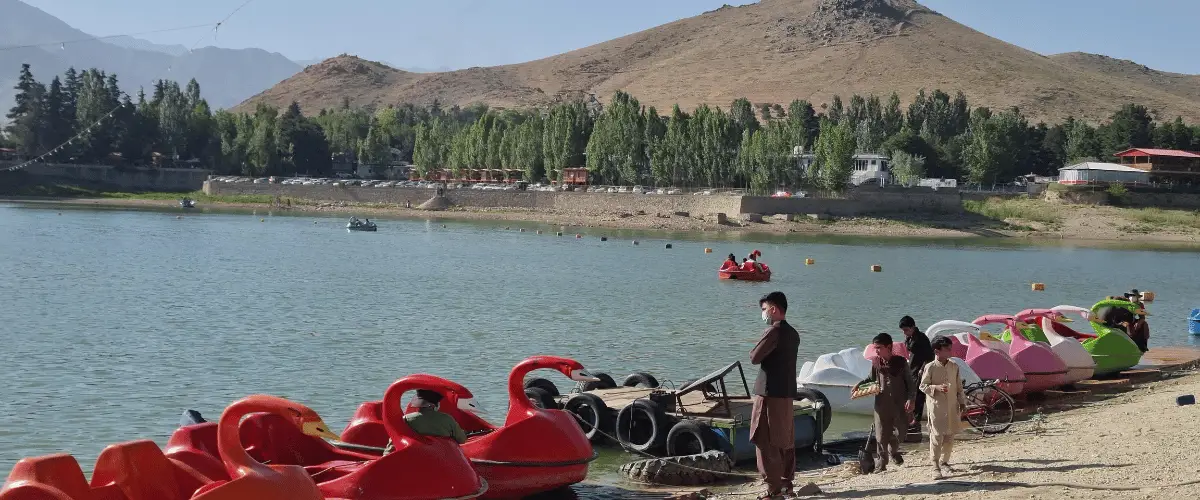
FAQ – Outdoor activities in Afghanistan
Is it safe to travel outdoors in Afghanistan in 2025?
In select regions, yes—especially Bamiyan and Wakhan, where tourism initiatives are developing. Always consult local travel advisories.
Can women hike or camp in Afghanistan?
Yes, in many areas—especially with local female guides or in groups. Respect local customs and dress modestly.
Do tourists need permits to enter Afghanistan’s national parks?
Some areas like Band-e Amir may require an entry fee or local permit—ask your guide or local tourism office.
Pro Tip
Did You Know?
Hidden Towns & Villages in Afghanistan
Hidden Highlights
Istalif (near Kabul)
Famous for bright handmade pottery set against green hillside terraces.
Perfect for a short half-day trip when staying around Kabul.
Watch artisans throw clay and pick up a piece of history to take home.
Nuristan
Cradle of the Nuristani people who speak rare Indo-European tongues.
Timber houses cling to steep cliffs in flower-filled forested valleys.
Reaching it takes a guide, a sturdy vehicle, and an open heart.
Yakhchal Valley (Panjshir Province)
Tucked between snow-capped peaks, fields blossom beside clear streams.
Visit farms, help bake bread in mud ovens, and sip milk fresh from the herd.
Ideal for slow walks where only birds and the wind break the silence.
Faizabad & Villages of Badakhshan
Far east stop full of stories from ancient Silk Road caravanserais.
From the town set on river cliffs, hike to shrines and mountain homes.
Region shines with lapis lazuli mines and the warmth of its stone-armed people.
Bamiyan Villages
Venture a little past Bamiyans main street and you’ll find tiny villages sprinkled across the valley.
Stop and watch families plow with wooden harrows, or join a mini harvest festival and dance for an hour.
Small guest houses run by locals serve hearty meals and treat visitors like long-lost relatives.

FAQ – Rural places in Afghanistan
Can tourists stay in Afghan villages or rural guesthouses?
Yes—in many areas, local guesthouses or homestays are available. Book in advance and travel with a guide if possible.
Do villagers in Afghanistan speak English?
Rarely—some basic Dari or Pashto phrases go a long way. Many guides can help translate.
Is photography allowed in Afghan villages and rural areas?
Ask for permission—especially when photographing people. Some may be shy or have cultural reservations.
Pro Tip
Did You Know?
Festivals & Events in Afghanistan
Nowruz (Persian New Year - March 21)
Eid al-Fitr
rings bells, offers prayers, and expresses silent thanks as Ramadan comes to a conclusion.
Family tables overflow while the streets are stitched with bright dresses.
Open-air stalls overflow with sweets, sparklers, and small hand-wrapped gifts.
Eid al-Adha
Remembers Ibrahim’s test through prayer, sacrifice, and shared plates.
Communities gather with sheep, cows, and countless helping hands.
It is as much a time to look inward as it is to give outward.
Independence Day (August 19)
Marks the 1919 Treaty that dimmed foreign rule and rekindled hope.
Flags snap on rooftops while boys hitch homemade floats to bicycles.
Schools, parks, and dusty main streets fall quiet, then erupt in song.
Jeshn-e-Dehqan (Farmer’s Day—March)
This vibrant spring celebration allows everyone to recall Afghanistan’s rich agricultural heritage while also paying tribute to the men and women who provide the nation with food. In villages and small towns, fairs burst to life with music, dancing, poetry, and light-hearted games that last long into the evening. Stalls overflow with seasonal fruit, fresh bread, and handmade crafts tangible proof of the earth’s early blessings.
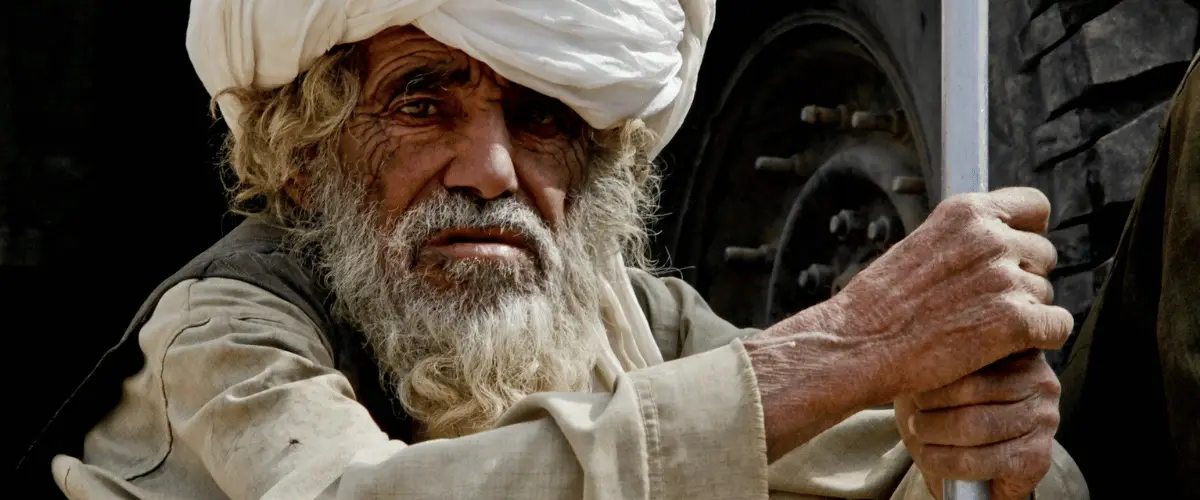
FAQ – Top events in Afghanistan
Can foreign tourists attend local festivals in Afghanistan?
Yes—especially public events like Nowruz and Independence Day. Go with a local guide to better understand traditions and ensure safety.
Are there any festivals in Afghanistan specifically for women?
While not widely publicized, women’s gatherings often happen around Eid and family events, though they may not be accessible to outsiders.
What should tourists wear when attending Afghan festivals?
Dress modestly—long sleeves, loose pants or skirts, and headscarves for women are respectful and often expected.
Pro Tip
Did You Know?
Pop Culture & Entertainment in Afghanistan
Afghan Music Traditions & Pop
Cinema & Television
Afghan filmmakers tackle family ties, migration, and courage; classics such as Osama and The Patience Stone are still widely praised.
Local dramas, talent shows, and quizzes air daily on Tolo TV, pulling huge nighttime audiences.
Around the clock, anonymous YouTube and TikTok creators dish out comedy, style tips, and sharp commentary.
Youth & Digital Trends
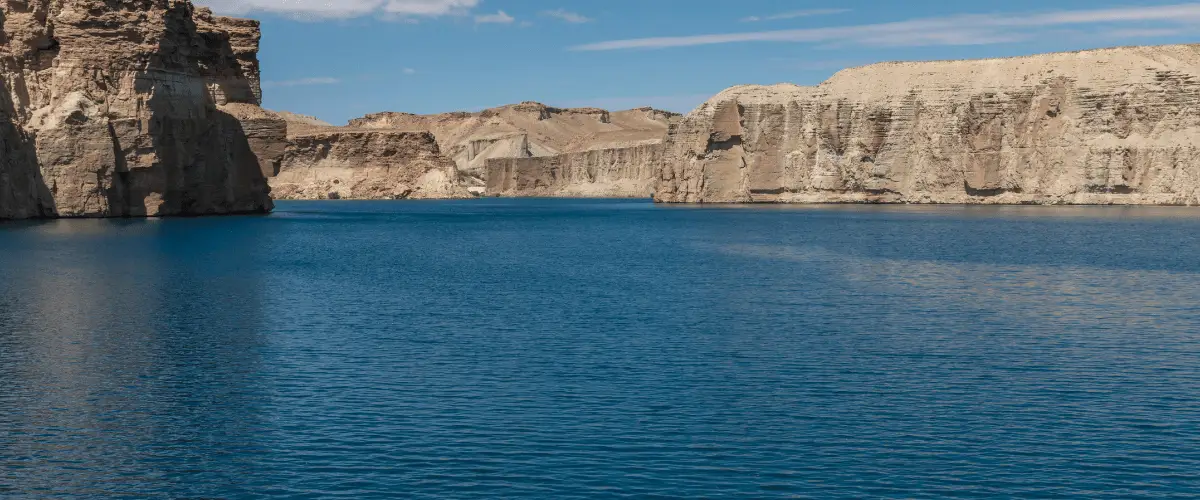
FAQ – Pop culture in Afghanistan
Is music still banned in Afghanistan in 2025?
In some areas, yes—restrictions vary depending on local governance. But music thrives in private spaces, online platforms, and diaspora communities.
Can tourists experience cultural performances in Afghanistan?
Public concerts are rare, but private performances or events organized by NGOs or expat circles are possible with local connections.
Are there Afghan social media influencers and content creators?
Yes—many young Afghans produce content on Instagram, TikTok, and YouTube, especially those living abroad.
Pro Tip
Did You Know?
Shopping & Souvenirs in Afghanistan
Must-Buy Items Afghan Carpets & Kilims
Lapis Lazuli & Gemstones
Afghanistan remains one of the planet’s oldest lapis sources, the stone prized for its deep, heavenly blue. Shoppers can also discover vivid tourmaline, emerald, and ruby from the rugged Panjshir and Badakhshan valleys. To be sure your gems are conflict-free, always buy from a respected, certified dealer.
Handmade Jewelry & Embroidery
Spices, Saffron & Green Tea
Herat’s saffron now rivals Iran’s in flavor and vivid hue, and its modest price surprises many travelers. Pair the saffron with fragrant spice mixes or high-quality green tea, both easy to pack and useful at home.
Local Art & Pottery

FAQ – About what to buy in Afghanistan
Is bargaining common in Afghan markets and bazaars?
Yes—haggling is part of the culture. Start low and negotiate respectfully.
Can tourists ship souvenirs or goods from Afghanistan to their home country?
It depends—check with your embassy and local shipping services for secure and legal methods, especially for high-value goods.
Are there ethical or fair-trade shopping options in Afghanistan?
Yes—look for stores affiliated with local cooperatives, women’s groups, or NGOs supporting fair wages and sustainable production.
